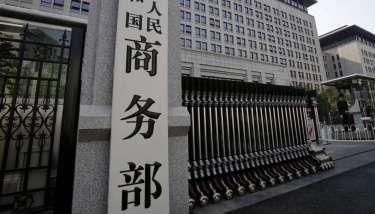搜尋結果
2020年3月19日 · MASUNAGA1905眼鏡店. 文藝青年給人的印象裡,眼鏡也許就是個不可或缺的元素。 這家名為MASUNAGA1905的眼鏡店,其實是從上世紀初就開始經營眼鏡店的增永眼鏡在reload開設的概念新店。 作為一家老店,增永眼鏡的口碑很好,一直堅守品質第一的原則,生產著日本手工製作的眼鏡。 每副眼鏡多達200道的製作工程以及大多數的零件的生產流程均嚴格管控,還曾獲得有著眼鏡業界的奧斯卡之稱的法國「SILMO D'OR」等獎項,在日本國內外都有一定的好評。 作為一家老店,店長荒川先生介紹了非常具有日本特色的眼鏡──這類眼鏡的鏡框上印有日本傳統家紋式樣。 這種家紋,自古就被用來表現出持有者的不同家族出身以及社會地位。
2017年12月21日 · Travel. > Historical. Hakone Sekisho: Historical Checkpoint. Michael Kanert Updated December 21, 2017. Historical Site Mount Fuji Hakone Greater Tokyo Kanagawa Kanto. pixta.jp. The Hakone Sekisho (箱根関所), or Hakone Checkpoint, was the first major checkpoint on the Tokaido (東海道) highway connecting Edo (now Tokyo) with Kyoto.
2017年11月17日 · Here’s why…. 1. The Views Are Unforgettable. Ginyu is perched on the edge of a mountain overlooking a steep valley that drops into the Haya River. Beyond this, there are rows of lush slopes that flirt with the sunset and transform into a canvas of red and orange during autumn.
2022年8月3日 · 賞櫻是日本全國各地共襄盛舉的例行性活動,從2月開始能在伊豆半島觀賞和津櫻,3月開始則能從九州觀賞各種櫻花盛開,緊接著京都、東京、東北皆會陸續的迎來花季,甚至到5月也能在北海道賞櫻。 富士本栖湖渡假村則是從四月中旬到五月下旬,提供大家觀賞有如一片粉紅草原的「富士芝櫻祭(富士芝桜まつり)」。 「芝櫻」與櫻花同樣有著許多品種,如深粉紅色有強烈存在感的「マックダニエル クッション(McDaniel’s Cushion)」、優雅的粉紅色的「オータムローズ(Autumn rose)」、浪漫的紫紅色的「オーキントンブルーアイ(Oakington Blue-eye)」、潔白有氣質的「リトルドット(Little dot)」等。
2017年12月20日 · Toki no Yu Setsugetsuka (季の湯 雪月花) is a luxury ryokan in Hakone, Tokyo's favorite hot spring (onsen) retreat. This Japanese-style inn is located a 2-minute walk south of Gora Station, where the Hakone Tozan Line ends and the Hakone Tozan Cable Car begins. Toki no Yu Setsugetsuka.
2022年5月23日 · 深度日本:江户切子,玻璃上的光影狂欢 | All About Japan. 闲云野蛋 2022年5月23日 更新. 酒吧 传统手工工艺 东京 关东. “江户切子”,但看这几个汉字,很难和玻璃杯联想起来。 事实上,历史虽不过百年,江户切子已经被认定为日本国家指定传统工艺品,还俘获了无数人心。 日本知名作家村上春树在他的英国游记《如果我们的语言是威士忌》中,描写了这样一个场景: 他们独自赶来,租一间别墅,不受任何人打扰地静静看书,把气味好闻的泥炭放进火炉,用低音量听威瓦尔第的磁带,在茶几上放一瓶高档威士忌和一个玻璃杯,拔掉电话线。 眼睛追逐文字追得累了,便合起书放在膝头,扬起脸,侧耳倾听涛声雨声风声。
2022年7月21日 · Ivy-covered guardrail of the Yotsuya Mitsuke Bridge dated 1913 (2nd year of Taisho). "The main thrust of the city, as it spilled over its limits in late Meiji [around the late 19th and early 20th centuries] was directly to the west, past Yotsuya to Shinjuku." So wrote historian Edward Seidensticker in his monumental and highly recommended tale ...

